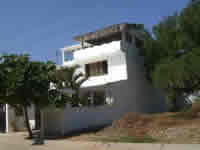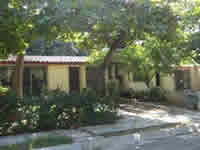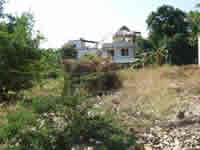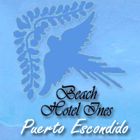Bacocho - Puerto’s Oldest Subdivision
Before I’d ever been to Bacocho I knew I wouldn’t want to live there. The assumption that just because I was a gringa I would naturally live in a gringo ghetto was insulting to me. So for a year, while I looked for a property to build on, I refused to see anything in the neighborhood. Of course I wound up living in Bacocho.
Bacocho is not picturesque, it’s not typical Puerto, and it could be a middle class neighborhood anywhere in Mexico or even southern California. But neither is it a gringo enclave of wintertime residents. In my part of Bacocho, at least, there are as many single-story row houses as there are two-story ones with roof-top palapas. My neighbors are Mexicans and Italians; they work, they send their kids to the nearby private schools, and they let out a collective sigh of relief when they discovered that a language teacher was moving on to the block - as opposed to a part time resident, or surfers.
Bacocho is the oldest fraccionamiento (subdivision) in Puerto, dating back to 1975. A fraccionamiento, as opposed to a colonia, like Lázaro Cárdenas, is a planned residential neighborhood where streets are paved and utility lines installed before lots are sold.
Round-abouts (retornos) built around small parks are a signature feature of Bacocho. There are eight retornos, but they are numbered from 1 to 17. House numbers are totally random. You get to choose your own, regardless of your neighbor’s. When I registered my building plans with the municipality I asked what my address was. What ever you want it to be, I was told. According to the title my property is lot 1 of block 2 of super block 1. This is not to be confused with my mailing address or what’s on street signs.
I can’t say I don’t envy people who live near Zicatlea the charm, the beauty, and vitality of their neighborhoods. But that does not keep me from gloating when I hear about their problems with water, their neighbors, the Internet and the condition of their unpaved roads.
History: In the late 1960s, the federal government, with the help of loans from the World Bank and the InterAmerican Development Bank, decided to invest heavily in international tourism. By the end of 1968, the Bank of Mexico came up with six possible tourist destinations, which were then narrowed down to three: Cancún, Ixtapa, and Puerto Escondido. (The other three were los Cabos and Loreto, in Baja California, and Huatulco.) So it was that on July 21, 1970, president Gustavo Diaz Ordaz expropriated 1,329 hectares of San Pedro Mixtepec - a parcel that included Bacocho.
Fonatur, started developing Puerto in 1975, but it pulled out in 1982 when it was unable to resolve the claims of Santa Maria Colotepec to part of the expropriated land. During its brief stay, Fonatur gave us, among other gifts, an international airport (completed in 1985) and the streets and electric lines of Bacocho.
The land trust of Puerto Escondido (FIPE), which is a state entity, sold the lots of the subdivision, mostly to investors from Oaxaca. The investors were under no obligation to build, and they didn’t. In the 1980s FIPE built the one-story row houses that dot the neighborhood. Building has never stopped since then. Still there are many vacant lots; some belong to the original investors and some are genuinely abandoned, with no current owner on record. I bought my corner lot as soon as it came on to the market in 2007. I believe the seller, a young woman from Oaxaca, was an heir of the original owner.
Every morning when I wake up to the sound of the birds in the trees in the vacant lots in front of my house, I feel like I live in the country or across from a park, and I am very content. I walk a few blocks to Cafecito for a cappuccino; life is good.
by Barbara Joan Schaffer













